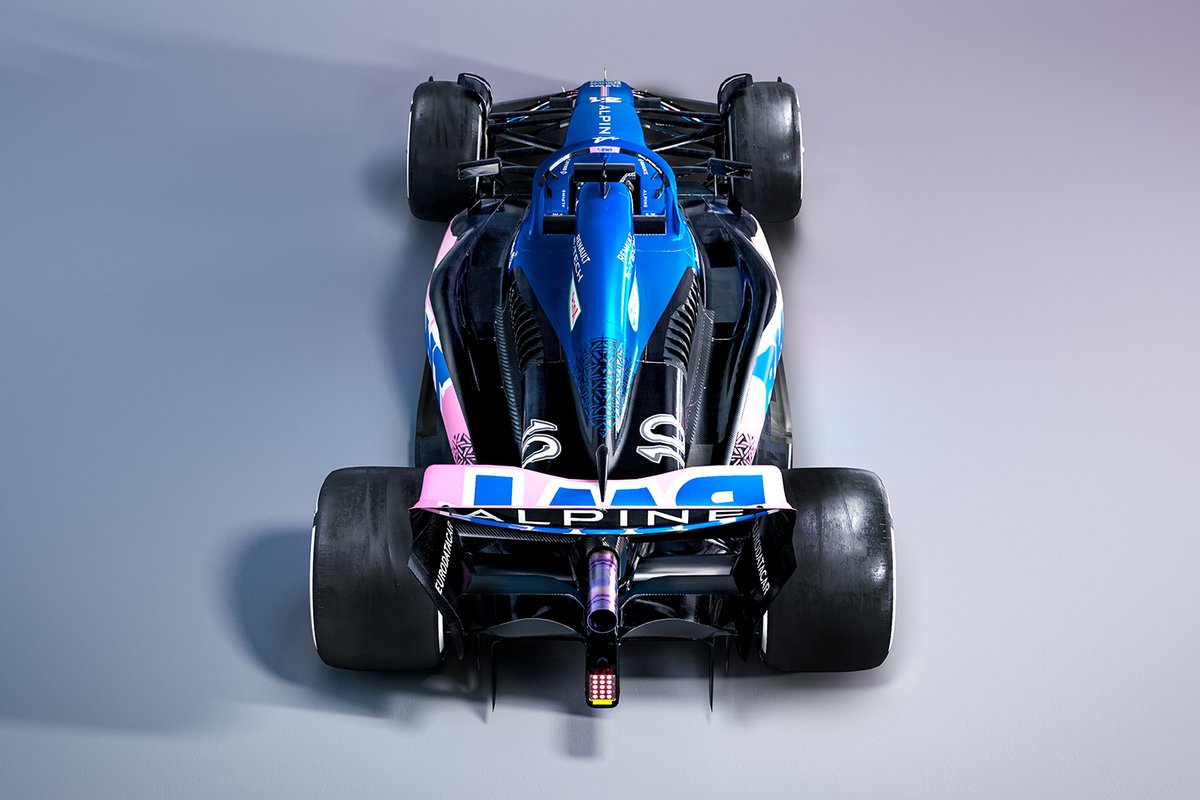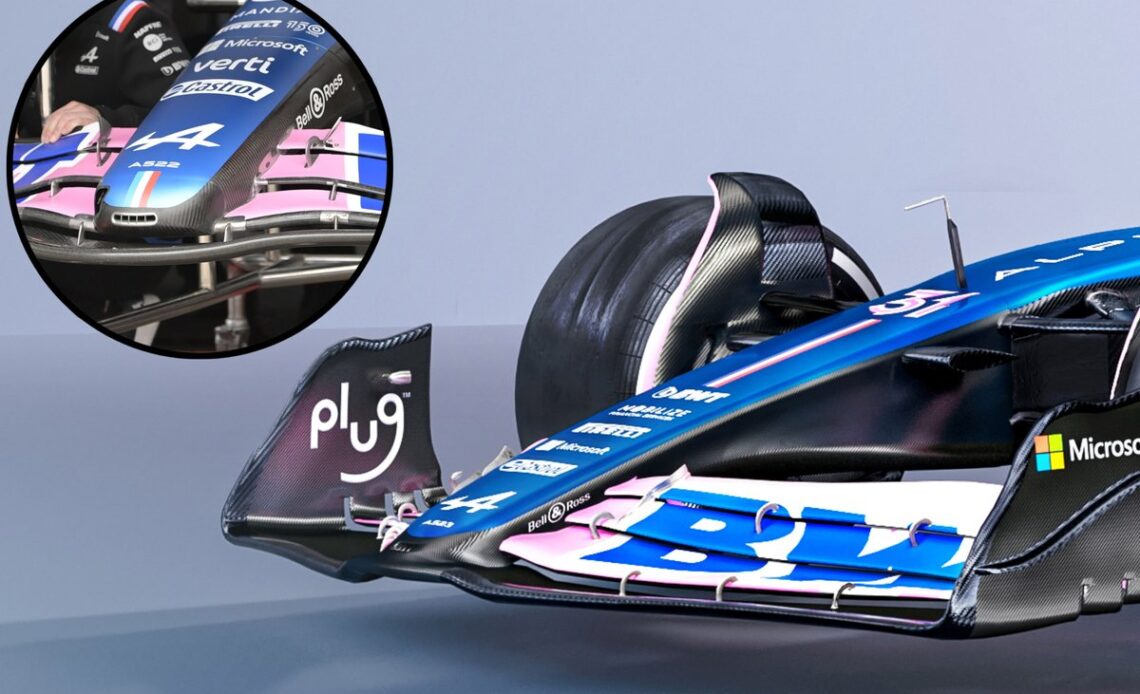But despite not holding back in bringing as many developments as it could, the French team has found room to make some pretty big changes for this season’s A523.
The 2023 challenger features a revised nose and front wing package, with Alpine deciding to dabble with an idea that rivals have abandoned.
PLUS: Can the A523 break Alpine out of the midfield?
The raised nose tip arrangement was used by both Aston Martin and AlphaTauri last season. And whilst the former persevered with its version until the end of the campaign, AlphaTauri had given up by the Japanese GP.
That’s not to say that the raised-tip solution is unworkable, as Alpine has clearly seen potential beyond its old layout, because the changes made to the new car require the front wing to be set a little higher in the mid-section.
Alpine A523 nose comparison
Photo by: Alpine
As always, it comes down not only to how much performance can be found right out of the blocks, but also how much more performance the team can expect to find further down the line too.
As technical director, Matt Harman explained: “It’s really, really important. Obviously, the shorter the nose, the more difficult it is to get it through the homologation process.
“But it’s also important that we ensure that the way we connect the beam wing of the front wing to the nose gives us the maximum opportunity for development.
“Depending on what element you choose to connect to, it can limit your development on the front wing. So we’ve been quite aggressive there and given ourselves quite a lot of modularity. You’ll probably see quite a bit of differences on our front wings as we transition through the year.”
In Alpine’s case, the tip of the nose runs right down to the leading edge of the mainplane, rather than being mounted just behind it, like its predecessor.
This has also led to some cosmetic surgery to the shape of the nose, with the bridge being flattened out.

Alpine A523
Photo by: Alpine
Alpine was one of the teams to start 2022 with the downwashing ramp sidepod solution. But, as time ticked by, it slowly morphed into something that allowed it to stand out from the crowd.
This shift focused initially on the hunching of the sidepods’ rear corner, which encouraged the passage of airflow from the top to flow down into the coke bottle region at the rear of the car.
However, the team continued to develop this concept, with the central portion of the sidepod excavated in order to create more of a…
Click Here to Read the Full Original Article at Autosport.com – Formula 1 – Stories…

